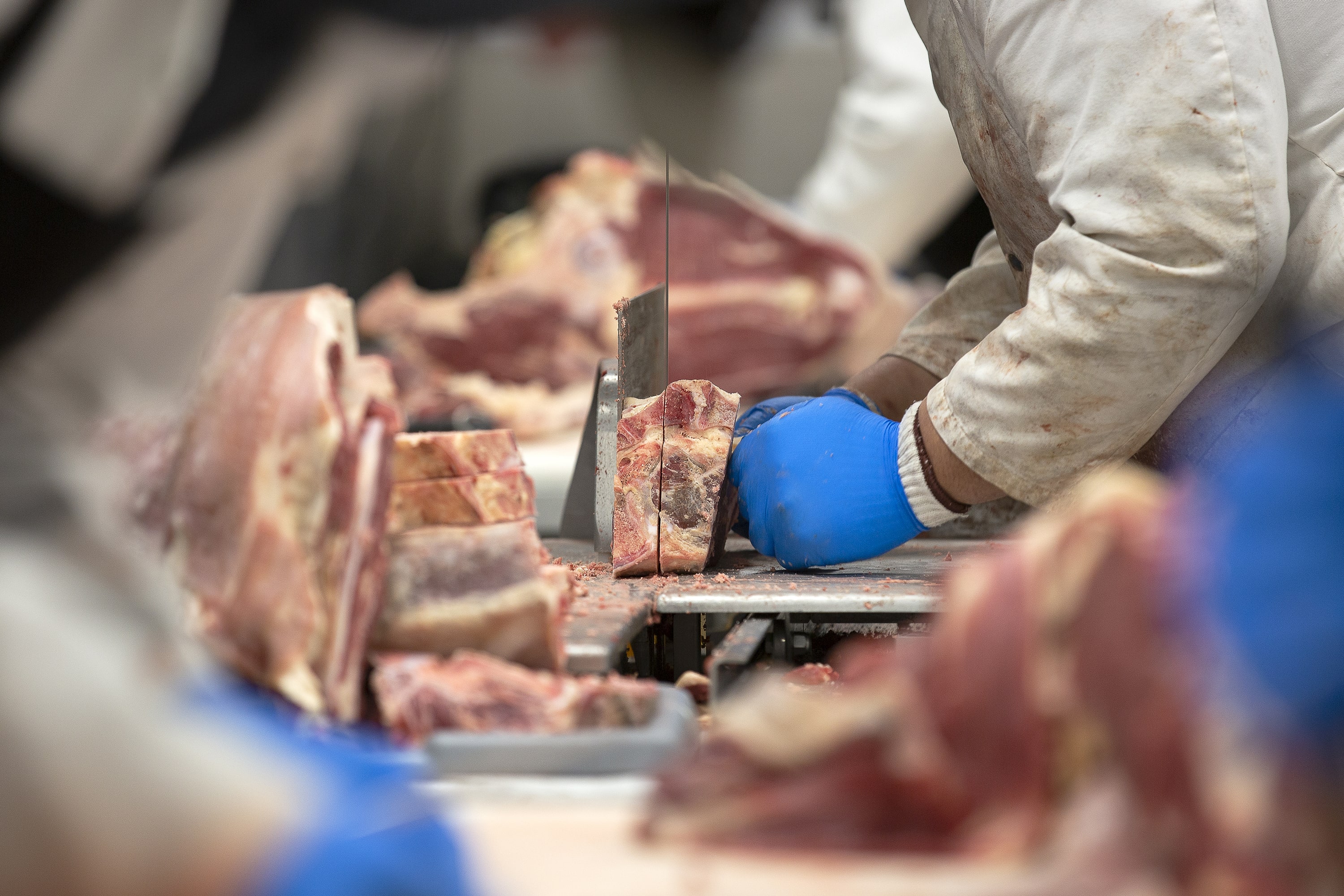The livestock harvest-to-package process can seem a little mysterious: an animal goes in, boxes of meat come out—but what does this look like inside a small meat processing plant?
The process of getting the animal from the pasture to the freezer is pretty straightforward. The length of time it takes will vary based on the meat processing facility’s capacity, aging time, staffing, and fabrication process, but here is the general flow in a Friesla Meat Processing System.
STUN & BLEED
Once an animal has been received onsite, the first step in the harvest-to-package process is stunning and bleeding. This is commonly known as knocking and bleeding or, simply, slaughter. Friesla’s Meat Harvest Modules and Mobile Meat Harvest Units include either an exterior humane handling livestock restrainer or are integrated with your pen system and restrainer. After the animal is restrained and stunned, it’s bled into a blood collection tank. Heavy-duty hoists and a meat rail built into the Meat Processing System make it easy to move the carcass to the next step.
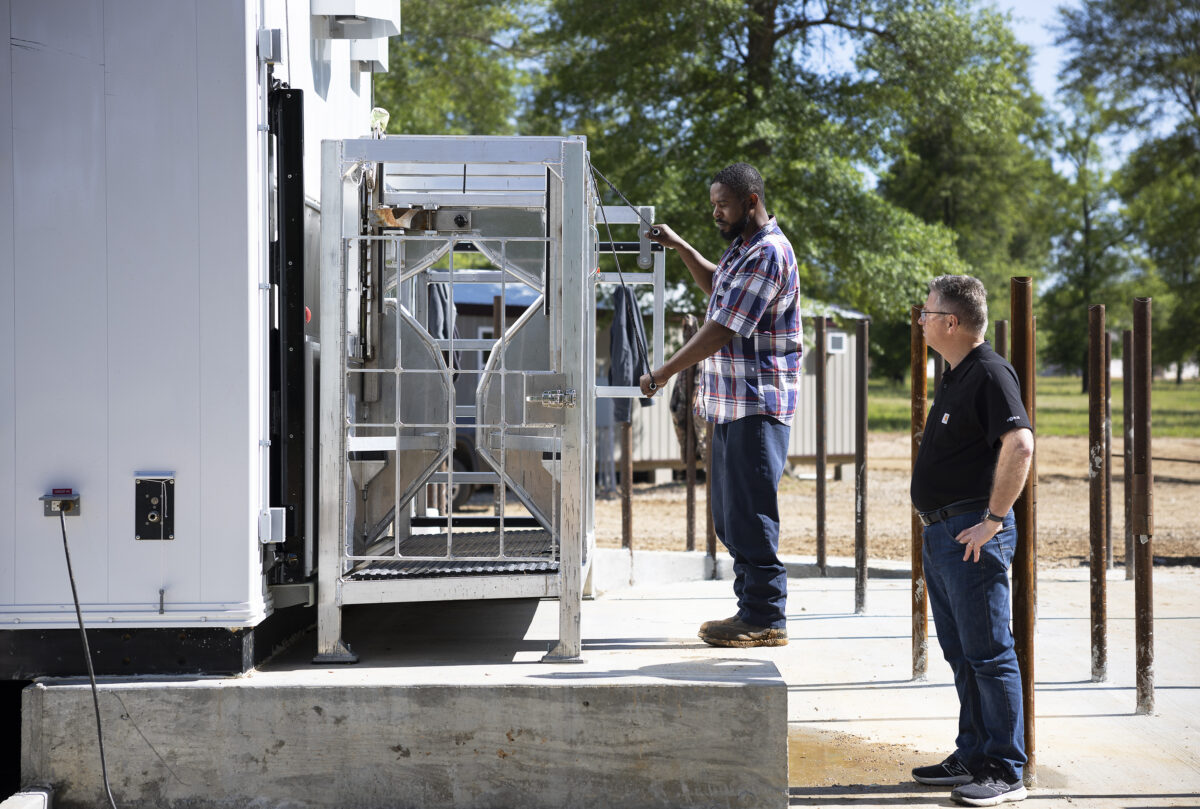

HARVEST
After the stun and bleed, it’s time for hide removal, evisceration (organ removal), and zero-tolerance trimming (controlling pathogens by cutting off fecal material, ingesta, or milk). To make this process as simple, clean, and efficient as possible, each Friesla Harvest Module or Mobile Harvest Unit is spec’d out for your operations and site. Each is equipped with a skinning cradle or hide puller in addition to the hoists and meat rail hanging system mentioned above.
COOLING/DRAWDOWN
The next step in the process is to cool the hot carcass. The USDA requires meat to be chilled to and maintained at specific temperatures (about 40°F) to inhibit bacterial growth in the time between an animal being harvested and cut/packaged. After harvesting, the carcass is moved on the meat rail from the Harvest Room into the Carcass Drawdown Cooler—the second of two rooms in either a Harvest Module or Mobile Harvest Unit. The Carcass Drawdown Cooler (commonly called a drip cooler or quick chiller) has an evaporation cooling system and high-volume airflow to rapidly lower the carcass’s temperature to USDA specifications. This typically happens overnight after a day of harvesting.
AGING
Up until this step, the harvest-to-package process is fairly standard. The aging step is where paths can diverge depending on the meat processor’s business model and consumer preferences. This is where things can get exciting! After the carcass has been cooled, it’s moved on the meat rail into the Carcass Aging Cooler. This cooler—the connection point between the kill floor and cut floor—is a purpose-designed Friesla Module built for USDA-compliant storage and dry aging of meat before carcass fabrication.

Since most large meat processors prefer wet aging (vacuum-sealing cuts of meat in plastic and cold storing them), dry aging is a differentiator for many small, independent meat processors and results in tenderness and a special flavor profile. Reference this expert’s guide on the differences between dry and wet aged meat.
Many small processors hang livestock like hogs, sheep, and goats between 1-3 days (long enough for full rigor mortis to set in and enable easier cutting) and age beef between 7-14 days depending on consumer preferences. However, some craft beef producers and processors—for example, Five Marys Ranch—extend the dry aging process longer, up to 28 days. When designing your Friesla Meat Processing System, we’ll size your aging space based on your needs today and into the future. This will allow you to easily expand by adding Carcass Aging Coolers as you grow.
CUTTING/FABRICATION
Once carcass aging is complete, the next step is to break down the carcass halves (or sides) into quarters, then primals and/or subprimals, and ground product (commonly known as grind). This happens in the Friesla Cut and Package Module, which is designed and laid out based on your processing volume, species, customers/markets, and products. Each Cut and Package Module arrives complete with fabrication equipment like band saws, grinders, mixers, slicers, and choppers. Some of your customers may want more primals, others will need more grind, and others will be selling direct-to-consumer and want a nice balance of subprimals (steaks, roasts, etc.) and grind. The Cut and Package Module gives you the space and tools you need to meet this demand.
READY-TO-EAT (RTE) PRODUCTS
If some of your raw meat will be made into ready-to-eat products, this raw product is prepared in the Cut and Package Module and then transferred into the Friesla Ready-To-Eat (RTE) Products Module. This RTE room is equipped with the tools you need to prepare meat products ranging from fully cooked sausages and snack sticks to jerky, bacon, salamis, and hams.
The module’s equipment package—ranging from large commercial smokers and fermentation chambers to cooler chambers—will be specified based on the RTE products you plan to make. This specialty equipment will be accompanied by all other implements needed in this space—from sinks and cutting tables to ventilation hoods, wash down hoses, and more.
PACKAGING
The next step is packaging, which will depend on your markets, customer requirements, and the inspection status under which your plant operates. All of the equipment you’ll need to package raw product is specified, sourced, and included in the Cut and Package Module: from workhorses like double chamber vacuum sealers to vacuum stuffers and rollstock packaging machines.
Meat from federally inspected processing plants (operating under USDA inspection) can be sold across U.S. state lines and internationally. Individual cuts and portions are typically packaged in clear, vacuum sealed packages and must follow stringent labeling requirements.
A state inspection status allows a meat processing business to sell meat products within the state where they were produced, but not across state borders or internationally. As with many things decided at the state level, meat packaging rules differ by state but the general rule of thumb is that state meat processing regulations are “at least equal to” those on the federal level.
A custom exemption allows a business to slaughter and process livestock or poultry without a federal inspection, solely for the livestock owner’s use. Meat from custom-exempt plants is typically packaged/wrapped in butcher paper—hence the common reference to having meat “cut and wrapped”—and stamped or labeled “Not for resale”.
FROZEN STORAGE
Once meat has been packaged, a Friesla Finished Goods Freezer keeps the product frozen until it’s time to be shipped or sold. When you need more frozen goods storage—whether now or as your business grows—this capacity can be expanded by adding multiple freezers. From here, you’re ready to ship your product to market: whether direct to consumers, retailers, wholesalers, or accounts like hospitals, restaurants, or schools.
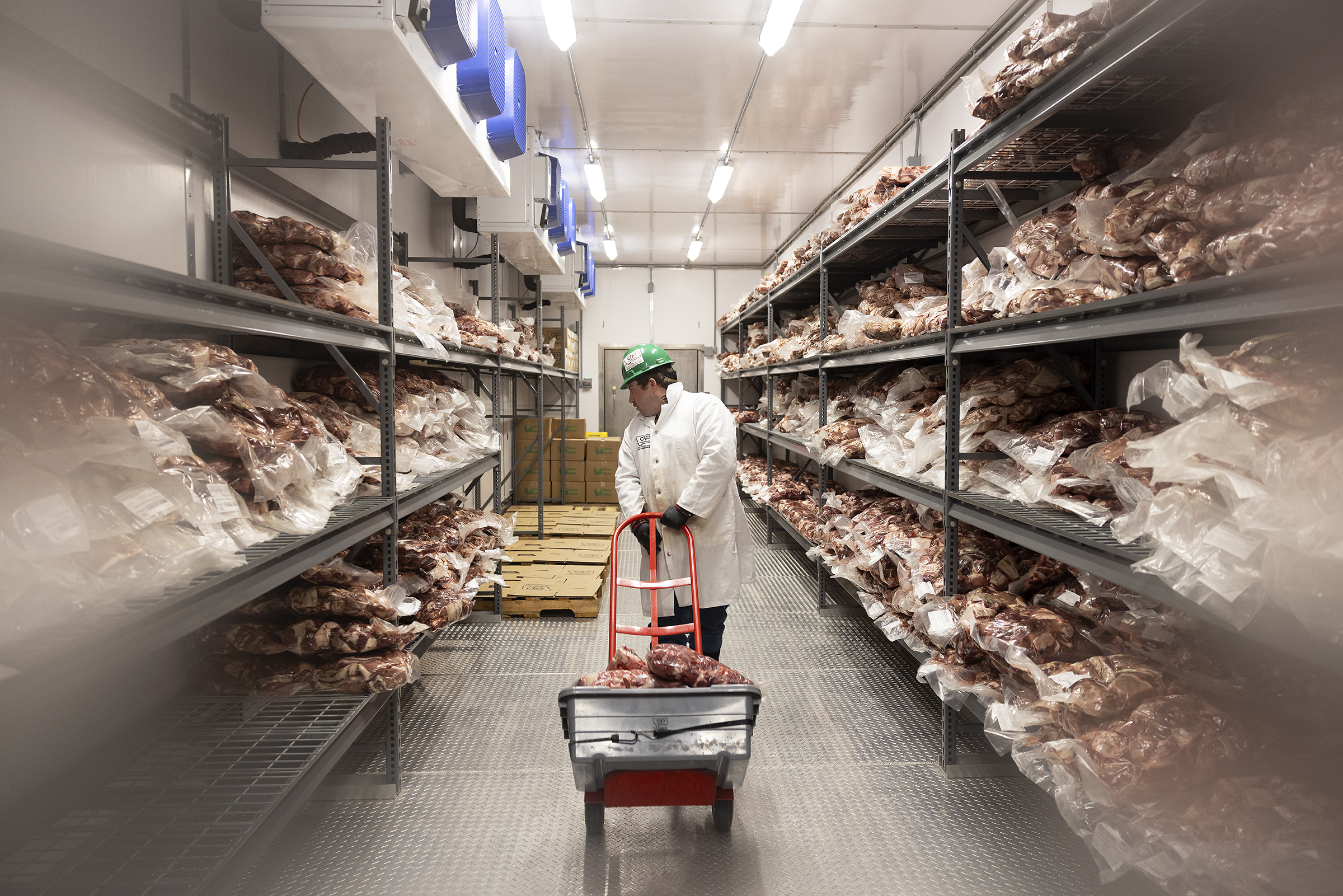
FROM PASTURE TO PLATE
Within the meat industry, independent meat processing businesses are unique in their flexibility to carve out a niche. You need the right tools to process craft meat products that excite the customers in your niche. Our team does the heavy lifting on designing, sourcing, and setting you up with these tools during our Project Development Phase—from purpose-built Mobile and Modular Meat Processing Systems to all of the equipment and services (like HACCP Plans) that enable you to put these tools to work efficiently.
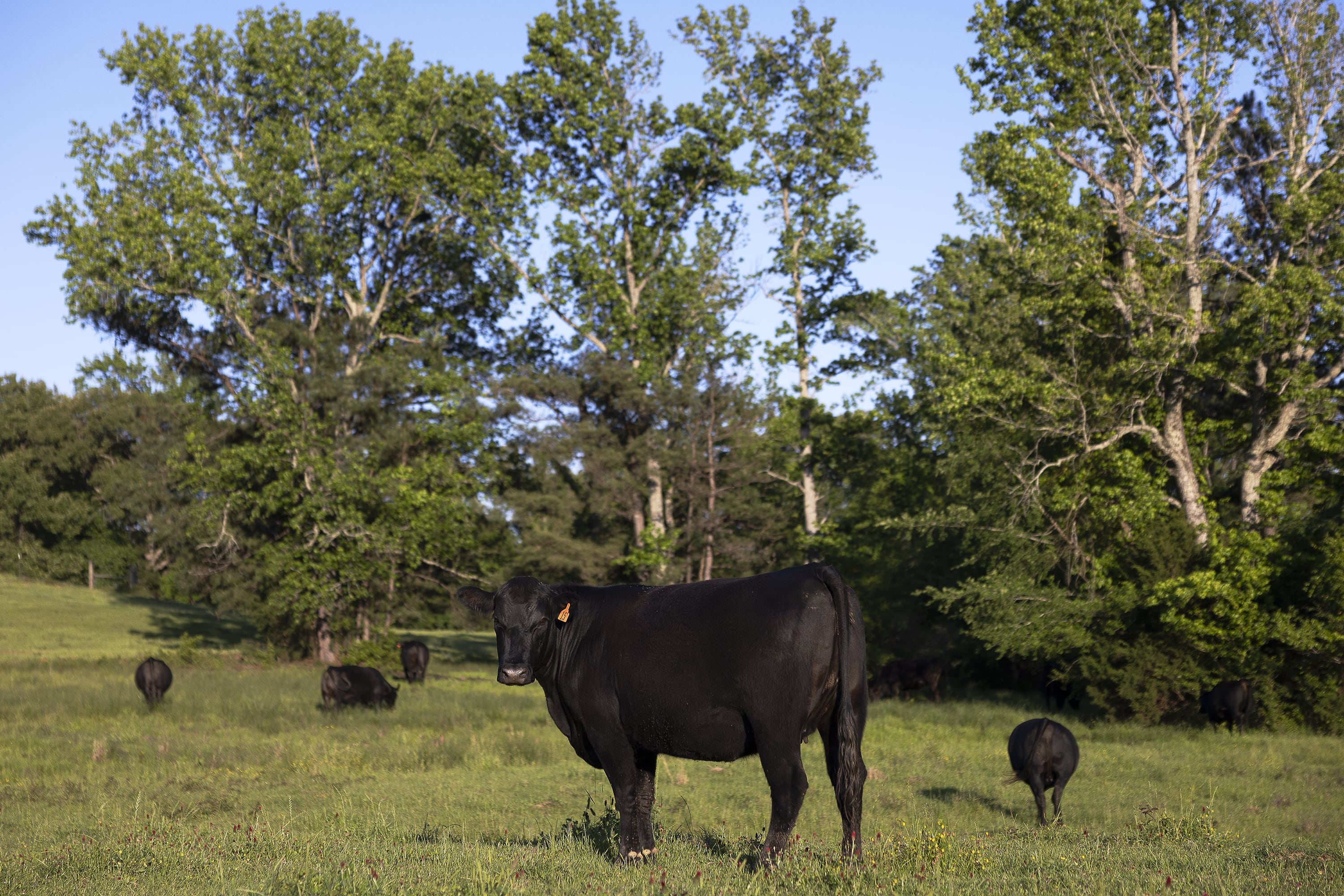
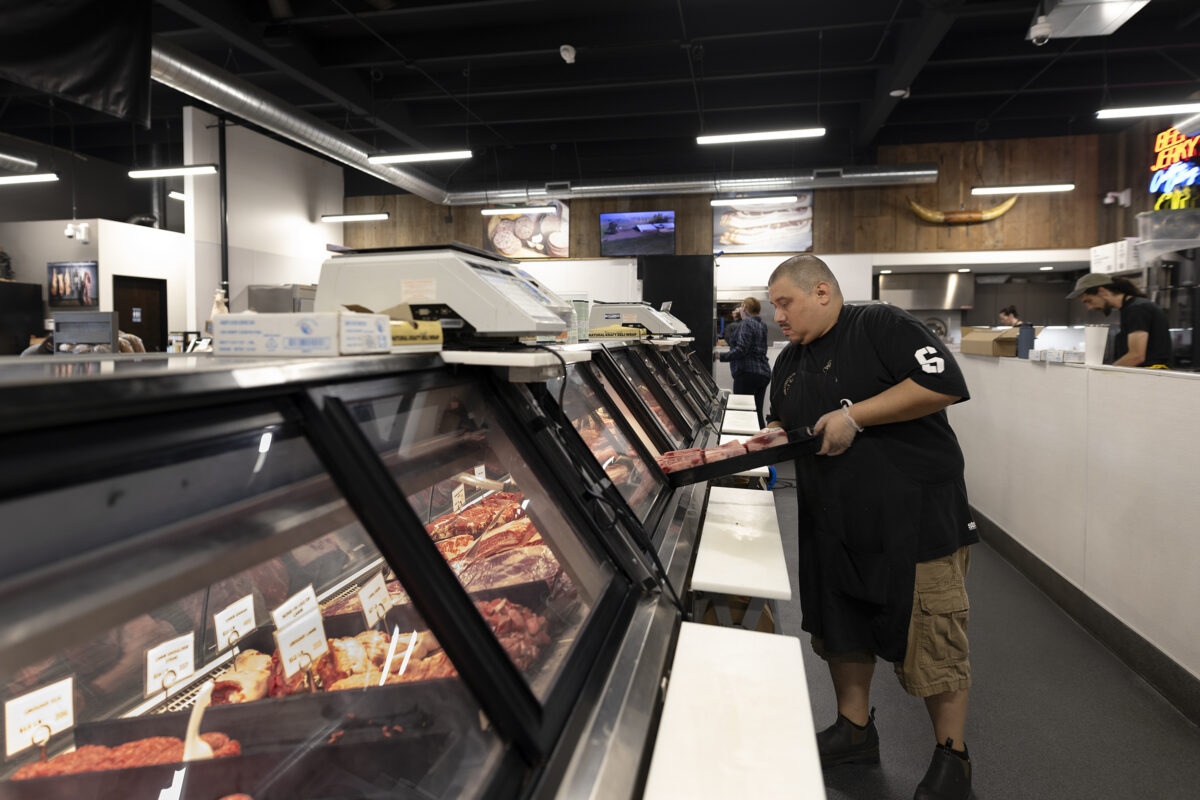
Your options might seem overwhelming, but working through the pros, cons, and implications is doable alongside the right guide. Connect with us to get this discussion rolling.
